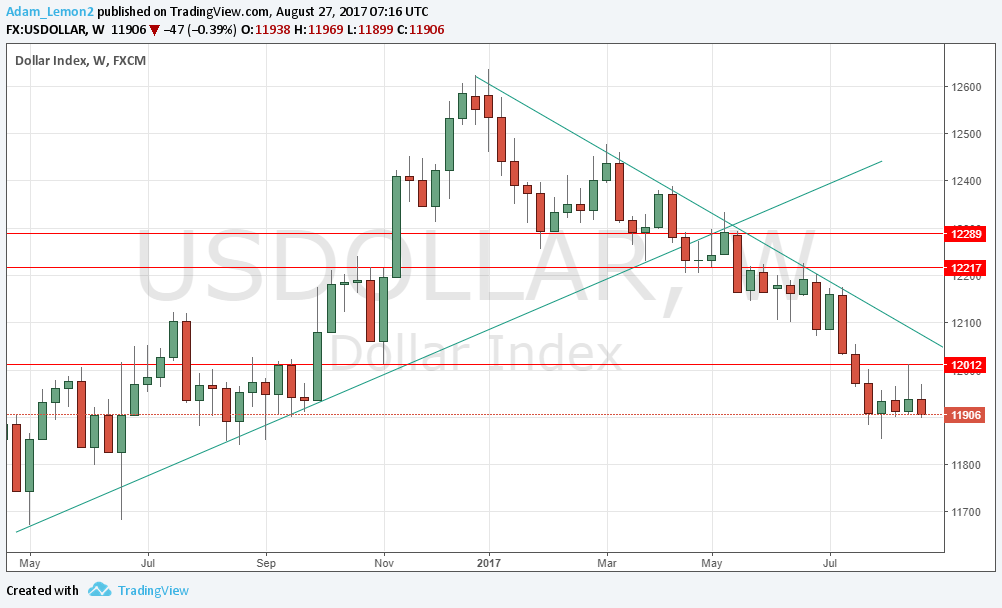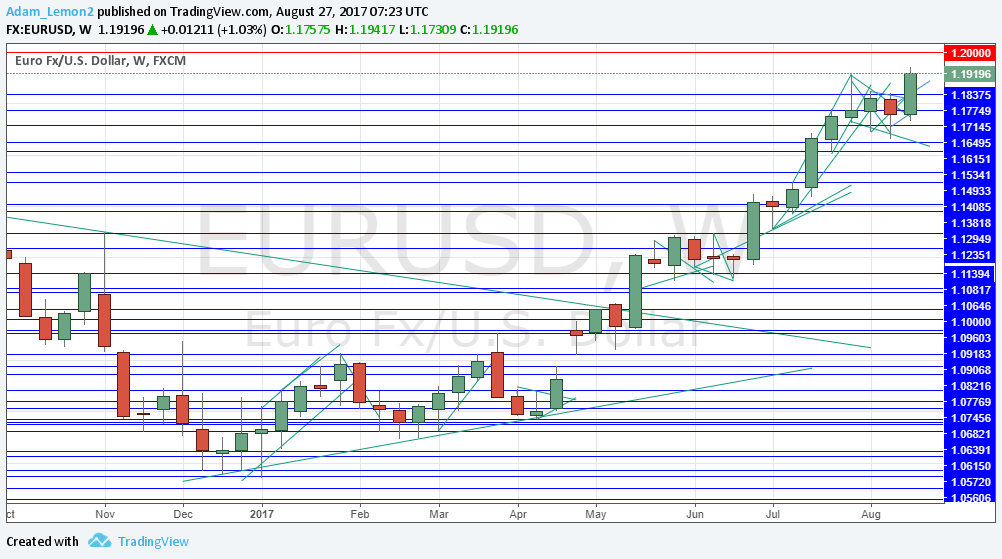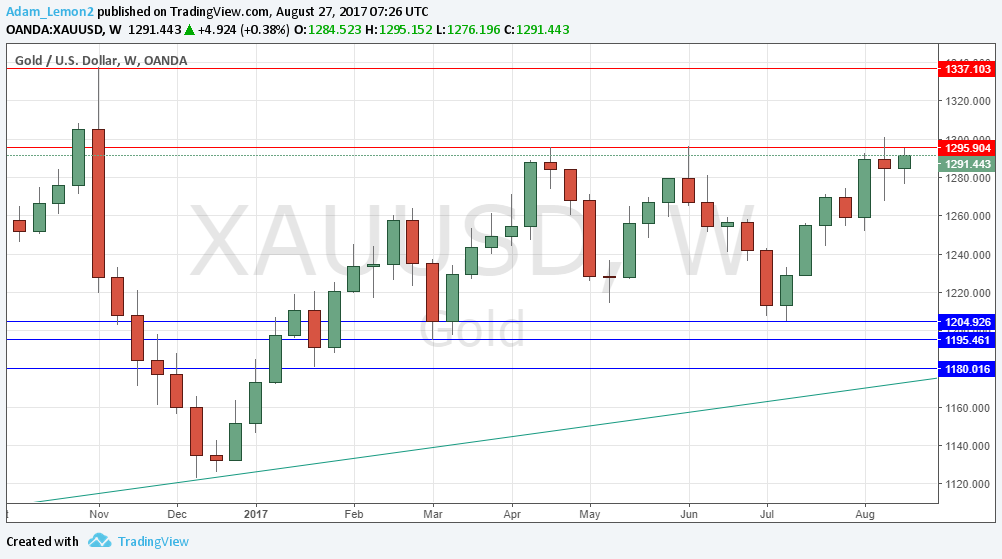The difference between success and failure in Forex trading is very likely to depend upon which currency pairs you choose to trade each week, and not on the exact trading methods you might use to determine trade entries and exits. Each week I am going to analyze fundamentals, sentiment and technical positions in order to determine which currency pairs are most likely to produce the easiest and most profitable trading opportunities over the next week. In some cases it will be trading the trend. In other cases it will be trading support and resistance levels during more ranging markets.
Big Picture 27th August 2017
Last week, I saw the best possible trade for the coming week long of the Japanese Yen and Swiss Franc, and short of the U.S. Dollar. The result overall was positive: the USD/JPY rose by 0.11%, but USD/CHF fell by 0.90%, producing an average gain of 0.40%.
The major event last week was the Jackson Hole summit of central bankers which began right at the end of the week. Speeches from Janet Yellen and Mario Draghi were keenly awaited. Yellen’s speech was not hawkish on the U.S. Dollar, which triggered a fall in the value of the Dollar, while Draghi’s speech failed to talk down the value of the Euro, so the Euro rose quite strongly to reach a two-and-a-half-year high price.
The news agenda this week will be dominated by several items of key U.S. economic data, most notably Friday’s Non-Farm Payroll data, which is usually the second most important driver of the Forex market.
Following the current picture, I see the highest probability trade this week as long of the Euro, and short of the U.S. Dollar.
Fundamental Analysis & Market Sentiment
The major sentiment in the market currently is a bearishness on the U.S. Dollar, which is boosted by the persistent and long-term bear market in the Dollar, and the relative weakness of Yellen’s rhetoric and U.S. economic data. This is in line with the long-term market trend, so the market appears relatively settled. If the U.S. economic data releases due later in the week disappoint, the trend should extend further, and the line of least resistance is against the greenback.
Technical Analysis
U.S. Dollar Index
This pair printed a bearish candlestick, with a clear upper wick, although it should be noted that the range is not comparatively large. There is a clear long-term bearish trend and the price has carved out new resistance above, while closely following a dominant bearish trend line. The resistance level at 12012 has been rejected, holding almost to the pip. It seems probable that the downwards movement will continue.
EUR/USD
This pair printed a large bullish engulfing candlestick, closing near its high and making a new two-and-a-half-year high price. The price broke out of a medium-term bearish trend line which had been holding it back, and is now trading in “blue sky”. There is little to hold the price down except perhaps the large, psychologically important round number at 1.2000. The last time the price was in this area, it moved down quickly, so there is a good probability it can now move up quickly, too.
Gold
Last week this pair printed a doji candlestick after rejecting a key resistance level at $1295.90, which had held over several months and already produced a double top. I thought this could be the start of a major bearish reversal, but noted that this was far from clear. The price has refused to fall this week, and so although the resistance is continuing to hold, currently a breakout is looking more likely than a reversal. The action on shorter time frames may be worth watching carefully.
Conclusion
Bullish on the Euro; bearish on the U.S. Dollar.



